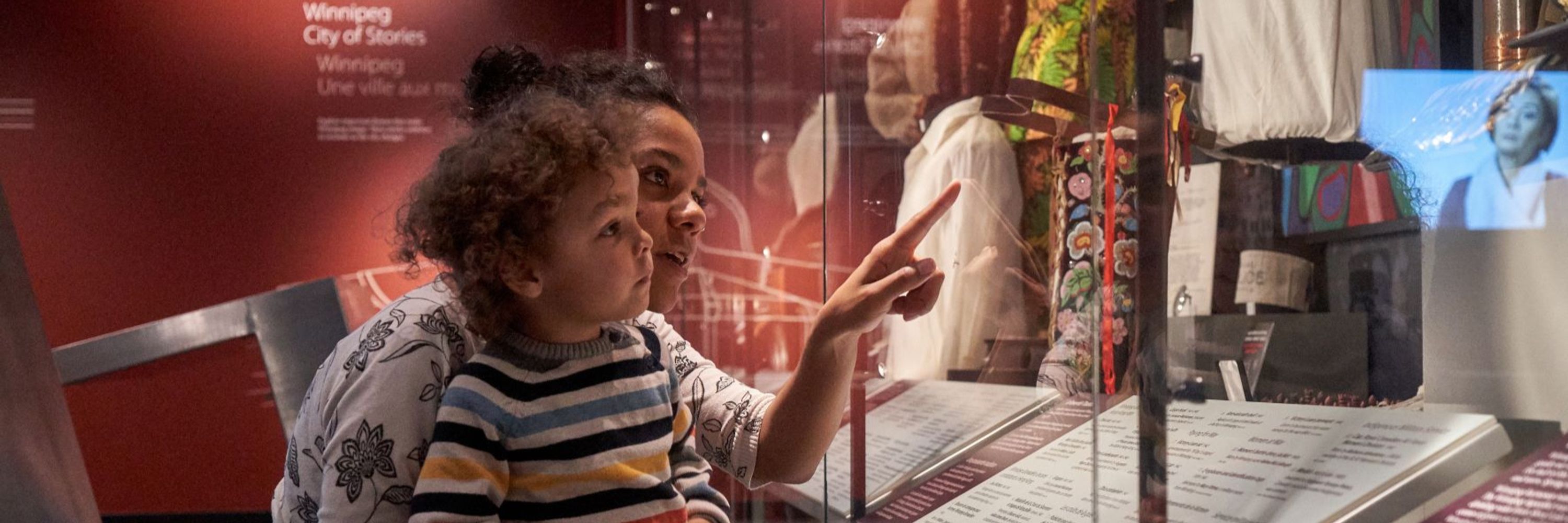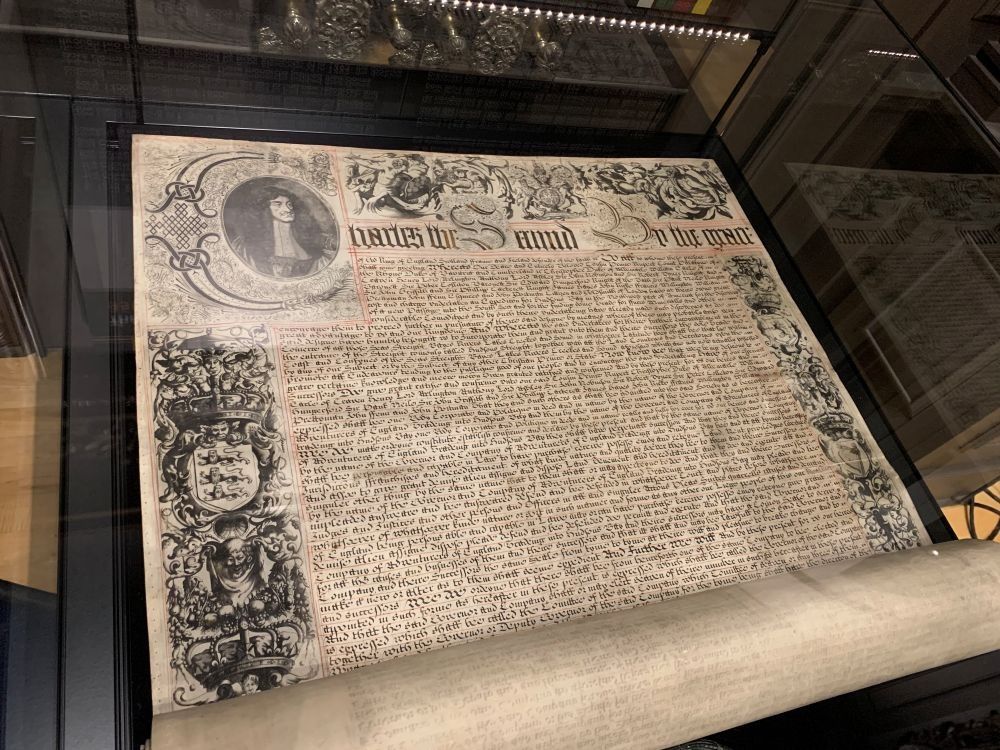
The Manitoba Museum is Manitoba's largest, not-for-profit centre for heritage and science learning. Immersive galleries, interactive exhibits, thrilling shows, and the stories you’ll remember forever!
ManitobaMuseum.ca
In this video Cortney shows us some costumes from the @rwballet.bsky.social (RWB) Collection here at the Museum. These two beautiful pieces are from performances in the 1960s: youtube.com/shorts/Aw94j...

In this video Cortney shows us some costumes from the @rwballet.bsky.social (RWB) Collection here at the Museum. These two beautiful pieces are from performances in the 1960s: youtube.com/shorts/Aw94j...
Find full job details here: https://ow.ly/A6zm50XE3fy
#Hiring #WinnipegJobs #ApplyNow

Find full job details here: https://ow.ly/A6zm50XE3fy
#Hiring #WinnipegJobs #ApplyNow
Read Planetarium Astronomer Scott Young's latest blog: https://ow.ly/GJVW50XCZzW

Read Planetarium Astronomer Scott Young's latest blog: https://ow.ly/GJVW50XCZzW
Get your tickets early: https://ow.ly/QR5j50Xzce7

Get your tickets early: https://ow.ly/QR5j50Xzce7
Make your bid: https://ow.ly/Wiw850XCZm3

Make your bid: https://ow.ly/Wiw850XCZm3
Register today: https://ow.ly/6QNV50XE8Ao

Register today: https://ow.ly/6QNV50XE8Ao
Plan your visit today: https://ow.ly/kuLX50XByrB

Plan your visit today: https://ow.ly/kuLX50XByrB
Learn more: https://ow.ly/hyZU50XCQu8

Learn more: https://ow.ly/hyZU50XCQu8
Learn more about Dec. 5 programming: https://ow.ly/BUMH50Xynqo

Learn more about Dec. 5 programming: https://ow.ly/BUMH50Xynqo
Make your bid: https://ow.ly/FFkM50XyOFi

Make your bid: https://ow.ly/FFkM50XyOFi
There's still time to give: https://ow.ly/lMhA50XBn5m

There's still time to give: https://ow.ly/lMhA50XBn5m
Help us finish strong. Donate: https://ow.ly/K6yH50XAoWh




Help us finish strong. Donate: https://ow.ly/K6yH50XAoWh
We are feeling the love, Manitoba! Thanks to your generosity, we have already raised $63,237 toward our Giving Tuesday goal!
The day isn't over yet - donate here: bit.ly/3MeYcnA
We are feeling the love, Manitoba! Thanks to your generosity, we have already raised $63,237 toward our Giving Tuesday goal!
The day isn't over yet - donate here: bit.ly/3MeYcnA
What inspires you to give? ManitobaMuseum.ca/Donate
#GivingTuesdayCA




What inspires you to give? ManitobaMuseum.ca/Donate
#GivingTuesdayCA
Give today and be part of Manitoba’s story: https://ow.ly/3MPS50XAm1G
#GivingTuesdayCA
Give today and be part of Manitoba’s story: https://ow.ly/3MPS50XAm1G
#GivingTuesdayCA
Get your tickets early: https://ow.ly/lepL50XzbE3

Get your tickets early: https://ow.ly/lepL50XzbE3
Give today and be part of Manitoba’s story: ManitobaMuseum.ca/Donate.
#MadeByManitobans #GivingTuesdayCA #MyMBMuseum

Give today and be part of Manitoba’s story: ManitobaMuseum.ca/Donate.
#MadeByManitobans #GivingTuesdayCA #MyMBMuseum
Sale ends January 4. Buy now: https://ow.ly/SpqT50XvYOF

Sale ends January 4. Buy now: https://ow.ly/SpqT50XvYOF
Learn more about December 5 programming: https://ow.ly/BUMH50Xynqo

Learn more about December 5 programming: https://ow.ly/BUMH50Xynqo
Open in Festival Hall from 10 am to 4 pm, Tuesday to Sunday, the Museum Shop pop-up offers a delightful range of items perfect for everyone on your holiday list. Shop in-person or online at ManitobaMuseumShop.ca.

Open in Festival Hall from 10 am to 4 pm, Tuesday to Sunday, the Museum Shop pop-up offers a delightful range of items perfect for everyone on your holiday list. Shop in-person or online at ManitobaMuseumShop.ca.
Make your bid: https://ow.ly/f1Ge50XyLYP

Make your bid: https://ow.ly/f1Ge50XyLYP


Give today and be part of Manitoba’s story: ManitobaMuseum.ca/Donate
#GivingTuesdayCA

Give today and be part of Manitoba’s story: ManitobaMuseum.ca/Donate
#GivingTuesdayCA
In this video, join Senior Conservator Carolyn to see two of the pieces she has been working on recently which are both made of silk: youtu.be/0nw2fzjTSRY

In this video, join Senior Conservator Carolyn to see two of the pieces she has been working on recently which are both made of silk: youtu.be/0nw2fzjTSRY
Enjoy unlimited free admission and so much more. Let the history, nature, and science of the Manitoba Museum change your life forever.
Explore Membership: https://ow.ly/fW4Q50XvYAJ

Enjoy unlimited free admission and so much more. Let the history, nature, and science of the Manitoba Museum change your life forever.
Explore Membership: https://ow.ly/fW4Q50XvYAJ

